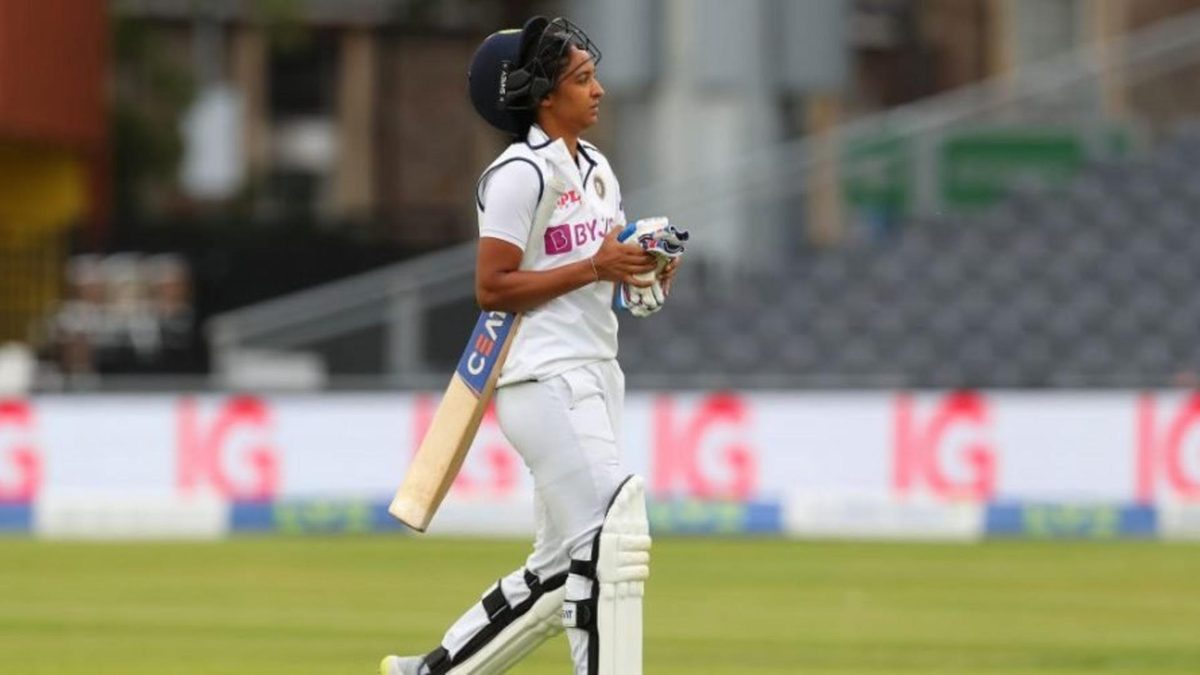
Playing Test cricket after seven years, India Women have shown flashes of brilliance intercepted by the inevitable mistake due to their lack of experience, writes Rohit Sankar.
Subscribe to the Wisden Cricket YouTube channel for post-match awards, player interviews, analysis and much more.
Twice in this historic Test match, India found themselves on top before meekly surrendering the advantage to England. After showing character and patience with ball and bat upfront, when things did go India’s way, they really couldn’t press the advantage to exert dominance.
From taking five England wickets for 40 runs to putting on a 167-run opening stand, the fourth-best in women’s Test cricket, there were phases where India dominated to the extent that it was difficult to accept they were playing five debutants. Yet, early on day three, they found themselves following on after losing six wickets for eight runs in a grim collapse.
Be it the strange decision to bring on spin early on day two, with the new ball less than 10 overs old, or Smriti Mandhana’s needless hoick just a few overs after Shafali Verma‘s dismissal to a very similar shot, the lack of experience of playing red-ball cricket came through amidst evident sparks of brilliance.
The on-field action really only deserves a backseat on this occasion – a women’s Test match is so rare, much less celebrated, and even less watched that any analysis or criticism seems moot; it’s often followed by the rhetoric ‘when will they play again’.
There’s one more Test to look forward to at least for India Women – a one-off day-night Test against Australia Down Under later this year. Contrary to what BCCI’s secretary Jay Shah chose to say in his Twitter handle, it does not show BCCI’s commitment to women’s cricket.
Taking forward our commitment towards women's cricket, I am extremely pleased to announce that Team India @BCCIwomen will play in their first-ever pink ball day-night Test later this year in Australia.
— Jay Shah (@JayShah) May 20, 2021
That argument is easy to back up. Take the case of Shafali Verma or Richa Ghosh, both of whom had no way to play age-group cricket to make their way to the Indian side. They still did, which is testimony to their ridiculous talent. But it’s questionable why India just have under-19 and under-23 women’s cricket. Their opposition in Bristol have age-group cricket starting from under-11.
That chasm, which ought to be pretty huge, has often been bridged by sheer talent as was displayed by the fearlessness in Shafali’s shots or the persistence of Sneh Rana and Deepti Sharma, all on their Test debut.
Yet, as conspicuous as the raw talent was, there inevitably popped quite a few questionable decisions: Why did Goswami bowl 14 of the first 36 overs? Why was Deepti, surely the No.1 spinner on paper, used for just one over – Sneh had bowled five in the meantime – in the first session on a sluggish wicket? Why weren’t either Ekta Bisht or Poonam Yadav, both of whom turn the ball away from right-handers, not picked in the XI when the entire England squad had only one left-hander (she ended up not playing)? Why was Deepti Sharma pushed down to No.7 when she was the obvious counter to Sophie Ecclestone?
With no context, no domestic structure, and zero opportunities in the domestic game to hone their red-ball skills, these questions are best thrown at a wall. Like at Wormsley and Mysore seven years ago, there’s enough evidence to argue that the women deserve better support. At Bristol in 2021, there’s still no light at the end of the tunnel yet to suggest these aren’t token Test matches arranged to appease the detractors.








